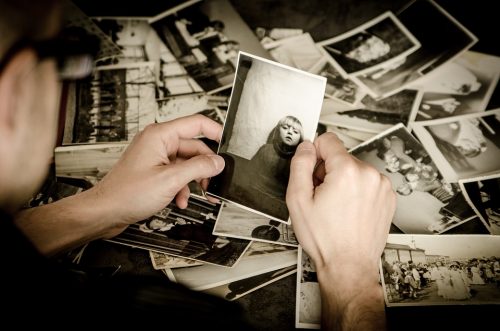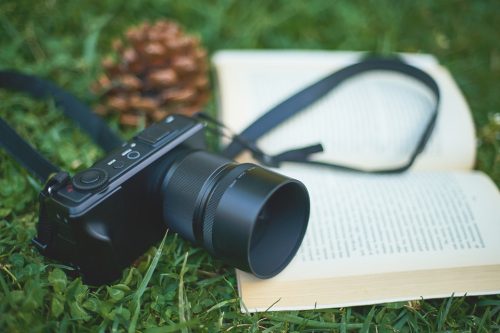Many people benefit from phototherapy as it opens their eyes to the beauty of every moment that they are in. Let’s find out more about utilizing this specific technique to help with our mental health.

Considered the footprints of one’s mind, photos hold the silent stillness that reflects the memories that a person holds dear. How does an photo-making intervention work for someone’s mental illness?
What Lies Behind The Captured Photos
At photo viewing, people automatically, and spontaneously create prolific meanings based on what they see and not necessarily what the photographer initially intended it to be – because the human mind is variable. For this reason, any photo is open to interpretation and exploration. Therefore, an individual’s reactions to snapshots or a self photographs are considered unique because they can reveal a great deal about themselves if the right kinds of questions are asked. Photography allows people to know each other. It can even be a therapeutic experience for some.

For Mental Health
This concept of phototherapy and photography therapy depicts why the majority of people keep snapshot memorabilia to shed light on something or have something to look back to whenever they feel the need to go down memory lane. Here, the photo is frozen bridges for exploring, communicating, and accessing memories, emotions, and feelings, along with resurfacing any long-forgotten, deeply-buried issues that can initiate meaningful thoughts and feelings.
As “mental health includes our emotional, psychological, and social well-being, it affects how we think, feel, and act.” Catherine Cleveland M.S., LMHC-P explains.
Therapeutic Photography For Self-Expression And Self-Esteem
During therapeutic photography sessions, the individual photos are used as a therapeutic tool and shown to serve as tangible and symbolic transitional objects that quietly offer more profound insight in a manner that words alone cannot thoroughly deconstruct or represent.
Therapeutic photography is a self-initiated form of self-therapy that utilizes ordinary snapshots to address mental phenomena and help increase self-esteem. According to the International Journal of phototherapy and therapeutic photography, this approach has shown promising results in reducing the stress hormone cortisol levels and helping clients heal from various issues. This kind of therapy is particularly beneficial for minority groups and chemically dependent individuals who may face unique challenges. In the digital age, phototherapy can be used both individually and in an organized group setting to provide a safe and effective form of treatment.
With the guidance of a trained therapist, therapeutic phototherapy techniques are implemented by allowing clients to explore their albums of friends or family members and take out images that mean something to them so that they may be of therapeutic use. There is potential information ingrained in every image, which can be used to precipitate and focus the treatment dialogue.
Now that one is aware of the simplified principles of phototherapy, what can people expect during every treatment session? Do you focus only on pictures of people, or does it include places or things in life that evoke feelings that can help with remedial healing? Do you need prior training with a professional camera to be part of mindful photography individual or group treatment?
Pictures Are Not Only Passively Shown In Silent Reverie But Are Also:
- Created during or after meetings
- Listened to and talked about
- Integrated into other therapy practices (e.g., art therapy and online therapy)
The majority of photography techniques (self-portraits, photo albums, etc.) allow individuals to have a better understanding and reach, wherein they can comfortably and efficiently express portions of themselves in a manner that was not previously deemed possible.

Therapeutic Photography: To Support
Therapists can utilize therapeutic photography techniques in treating their patients with mental health concerns, particularly those who love taking pictures and photo-based activities, and find it nurturing or remedial. Here, taking photographs becomes part of an art or talk therapy session to acquire emotional information from the client. For instance, a client is asked to look at a self-portrait for the remedial use of looking into how this client feels about himself, including his frustration, self-worth, confidence, and overall awareness. The client can also look at photos of nature, art, or photographs that might evoke traumatic memories to help the mental health professional assess the client throughout the process of healing.
Phototherapy is a photo-instrument that can be used to address social exclusion and promote well-being. I other words, it uses photography as therapy, hence why it is also sometimes called mental health photography. According to current literature, phototherapy refers to the use of photographs as a tool for therapy and has shown promising results in improving mental health. A qualitative study conducted by the Lancaster University Phototherapy Center found that photo interactions can help individuals overcome feelings of isolation and promote social connectedness.
Take note that the primary role of a therapist in phototherapy is to support and encourage the person’s self-expression or boost self-esteem and mental and physical health care intervention and, at the same time, explore personal images and interact in a healthy, non-intrusive manner. They may share some photography tips, as in how people can feel good from photography. These tips may include sharing on social media moderately, framing their photography, or printing photos and compiling them in remembrance albums.
Finals Thoughts And Takeaways
It is not about them discussing or interpreting images for their clients, but it is the remedial photography that gives people the healing benefits and opportunity to explore what the images mean and how these images impact or change their lives without turning into mental health professionals. Who knows, you may even post pictures on your rehabilitation counseling bulletin for positive life experiences during the therapy process.
Phototherapy is a form of therapy that can help individuals reduce social exclusion and gain a sense of connection and belonging. Through the ability to start talking about their photographs, individuals are able to express their emotions and experiences in a non-threatening way.
Therapeutic photography can be learned just like art therapy. If you love taking self-portrait pictures, try therapeutic photography for mental health nursing or to fight your mental illness!
FAQs
What are the 4 styles of therapeutic photography?
How does this type of therapy become a healing process?
How can I practice mindful photography?
How do photographers use psychology?
What are the 7 elements of photography?
What are the 3 basic types of photography?
What is sensory photography?
What are the 4 basic elements of photography?
Is taking photos therapeutic?
What are the benefits of therapeutic photography for physical and psychological health?
Why are therapeutic techniques important?
What is the most common therapeutic approach?
What is the most important goal of therapeutic play?
What are the benefits of therapeutic communication?
